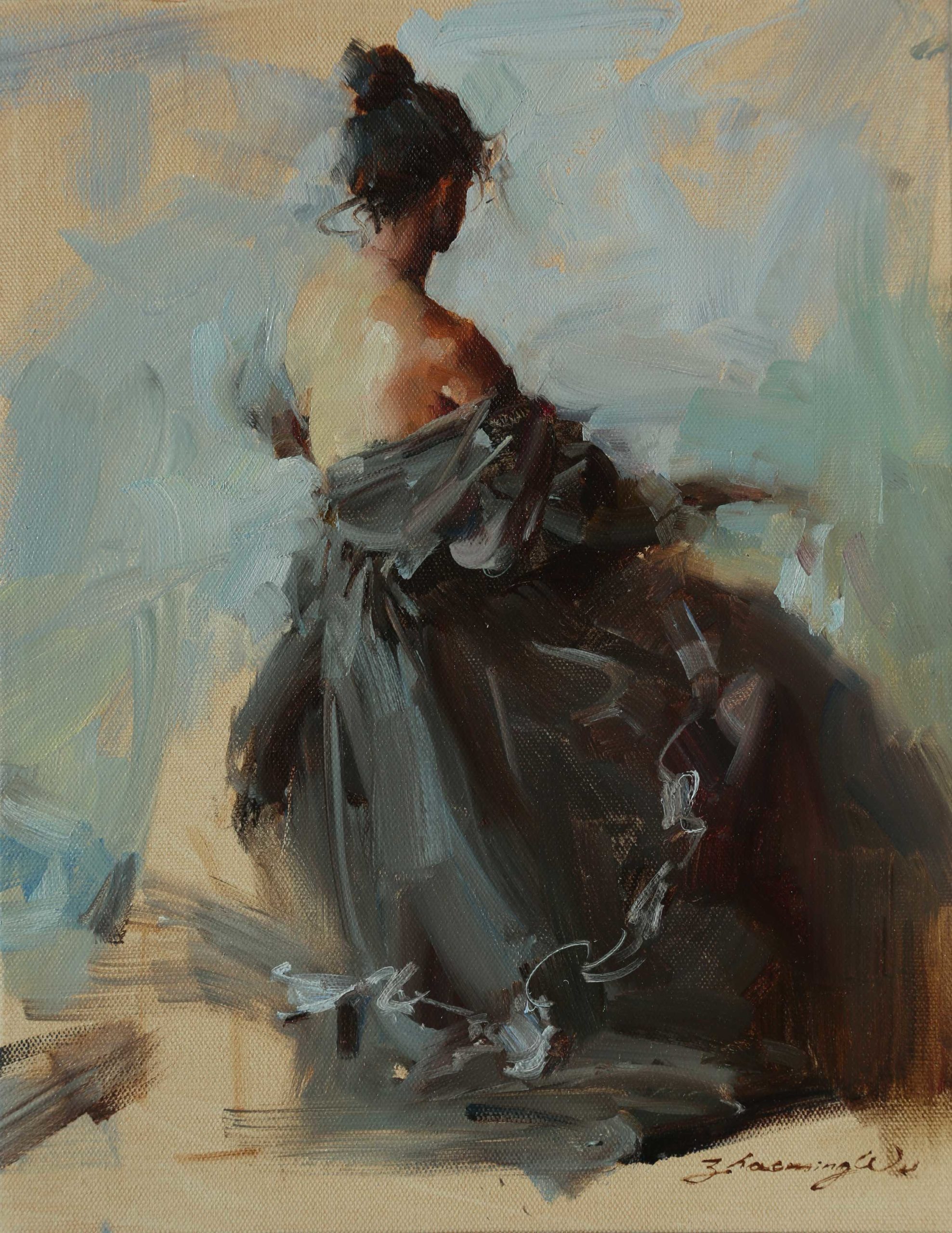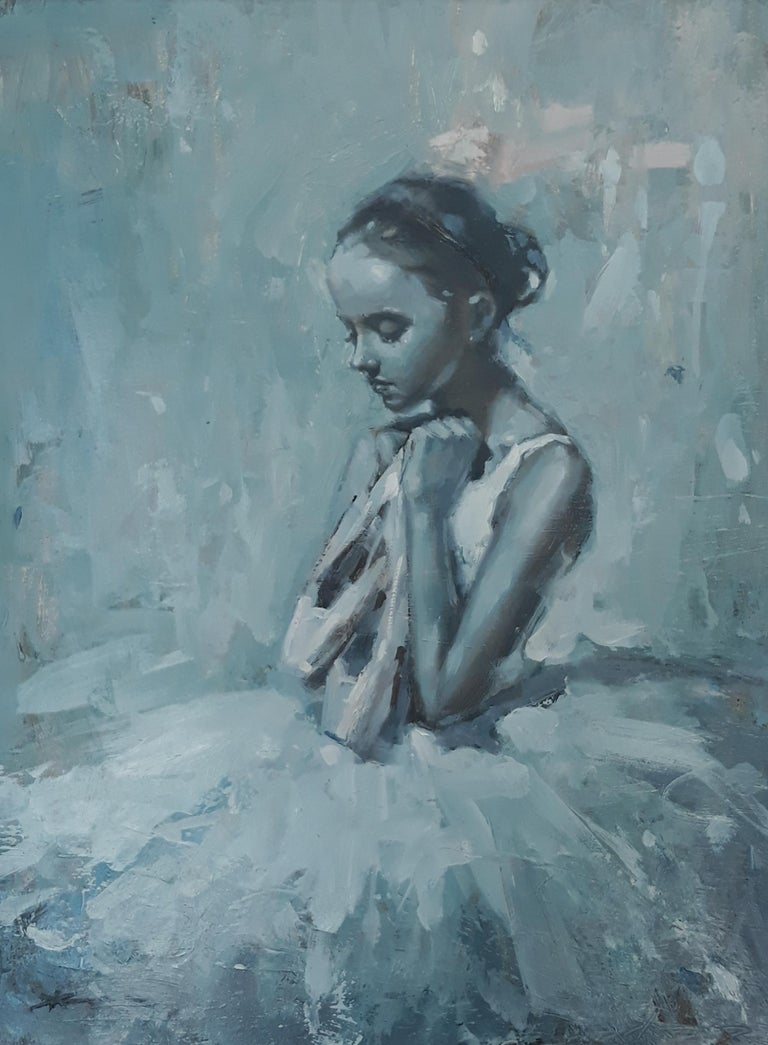The Function of Feeling and Expression in Metaphorical Oil Paint: An In-Depth Evaluation of Topic and Composition
The interaction of feeling and expression in metaphorical oil paint acts as a crucial lens where one can examine the intricate partnership between topic and make-up. Artists harness numerous strategies, from shade selection to brushstroke characteristics, to cultivate psychological resonance within their jobs. This nuanced orchestration not only forms viewer assumption however likewise welcomes a much deeper inquiry right into exactly how these components integrate to reflect the complexities of human experience. As we explore this abundant terrain, one need to think about how certain situation studies brighten the wider ramifications of these artistic options.
Understanding Feeling in Art
Feeling in art serves as an effective conduit for expression, enabling musicians to convey complicated sensations through their job. In metaphorical oil painting, this emotional deepness is frequently portrayed through the depiction of the human figure, catching the subtleties of human experience. The choice of subject, shade scheme, and brushwork all add to the emotional resonance of an item.
Artists often attract upon individual experiences, social problems, or universal styles to evoke sensations in the customer. A portrait may reflect susceptability, while a vibrant number in movement can signify freedom or turmoil. These psychological threads connect the customer to the art work, cultivating a discussion that goes beyond the aesthetic medium.
In addition, the interaction in between light and shadow can amplify emotional strength, guiding the audience's gaze and accentuating specific aspects within the structure. Using texture in oil painting further adds layers of intricacy, welcoming a responsive action that improves the emotional experience. In general, comprehending emotion in art is crucial for valuing the nuances that define figurative oil painting, as it transforms plain depiction into an extensive exploration of the human condition.
Key Elements of Make-up
In the world of figurative oil paint, the make-up acts as the underlying framework that arranges visual components and improves the emotional story. Vital elements of composition include equilibrium, contrast, centerpiece, and rhythm, each adding to the overall influence of the art work.
Balance describes the distribution of aesthetic weight within the paint, which can be achieved via asymmetrical or balanced plans. A well-balanced make-up supplies stability, permitting the audience to involve with the piece harmoniously - figurative oil painting. Comparison, on the other hand, entails juxtaposing various elements, such as dark and light or warm and cool shades, to direct the visitor's eye and stimulate psychological reactions
The focal factor is crucial, as it directs focus to the most substantial component of the painting, frequently highlighting the psychological core of the narrative. Through techniques like color saturation or placement, musicians can emphasize this area successfully. Lastly, rhythm concern the repetition of aspects, producing a feeling of movement and flow throughout the make-up. By skillfully integrating these vital components, musicians can craft psychologically resonant and compelling metaphorical oil paints that astound and engage their target market.
Subject and Its Impact
Subject matter plays a pivotal role in metaphorical oil paint, as it not only acts as the foundation for the story however likewise forms the visitor's interpretation and emotional interaction with the artwork. The choice of topic-- be it a solitary figure, a group dynamic, or a thematic representation-- straight influences the emotional atmosphere shared to the audience.

For circumstances, pictures frequently stimulate personal links, disclosing the details of human expression and character, while scenes depicting communal tasks can produce a sense of belonging or nostalgia. Moreover, the historical and social context of the topic enriches the viewer's understanding, prompting much deeper reflections on societal norms, worths, and the human condition.
Various topics likewise create varying levels of engagement; a dramatic dispute shown via numbers in stress may generate sensations of stress and anxiety or compassion, while peaceful landscapes can conjure up harmony and consideration. Ultimately, the impact of subject matter in figurative oil painting is profound, as it functions as a channel for psychological resonance, assisting the audience's action and analysis, and fostering a link in between the artwork and the viewer. This interaction is vital for the successful interaction of the musician's intent.
Techniques for Evoking Feelings
The effectiveness of figurative oil painting in communicating feelings is considerably influenced by the methods employed by the artist. One of the most essential approaches is using color concept, where the strategic selection of hues can evoke specific emotional responses. Warm shades, such as oranges and reds, frequently generate sensations of interest or aggressiveness, while cooler tones like blues and environment-friendlies tend to stimulate calmness or sadness.
An additional important method is the manipulation of light and shadow, understood as chiaroscuro. This technique enhances the three-dimensionality of figures, developing dramatic contrasts that can magnify emotional deepness. The positioning of light can assist viewers' feelings, highlighting particular elements of the composition.
Brushwork additionally plays a crucial role; loose, meaningful strokes can share energy and spontaneity, whereas smoother methods might recommend serenity or precision. The arrangement of subjects within the make-up can influence emotional effect. Close distance can recommend intimacy, while range may show seclusion.
Eventually, the combination of these strategies enables artists to craft narratives that reverberate with the audience, changing a simple aesthetic experience right into an evocative psychological journey. - figurative oil painting

Study of Noteworthy Functions
Analyzing noteworthy jobs of metaphorical oil painting discloses exactly how numerous techniques are utilized to stimulate effective feelings. One exemplary case is Edvard Munch's "The Scream," where the distorted figure and swirling background share existential dread. Munch's use shade-- deep blues and vibrant oranges-- magnifies the emotional influence, showcasing just how combination choices can shape viewer experience.
Another significant job is Pablo Picasso's "Les Demoiselles d'Avignon." Here, strong brushstrokes and fragmented types show additional hints a troubled emotional landscape, challenging conventional representations of the female figure. Picasso's innovative composition not just records the visitor's focus yet likewise invites consideration on motifs of identification and sexuality.
In Addition, Frida Kahlo's "The 2 Fridas" uses a poignant expedition of duality and self-identity. The different figures, connected by a common heart, exhibit Kahlo's emotional depth and personal narrative. figurative oil painting. Her thorough focus to detail and symbolic aspects serve to engage customers on a visceral level
These case researches underscore the extensive connection in between emotion and composition important link in metaphorical oil paint, disclosing exactly how artists harness strategy to interact complex sensations and narratives that reverberate throughout time and culture.

Verdict
To conclude, the interaction of emotion and expression in metaphorical oil paint considerably improves the viewer's experience and interpretation of the art work. With a cautious choice of topic and compositional methods, musicians share profound stories that resonate on both universal and individual degrees. The application of shade chiaroscuro, brushwork, and concept more amplifies psychological deepness, changing each canvas right into a powerful reflection of the complexities of the human experience.
In metaphorical oil paint, this psychological deepness is often represented via the depiction of the human figure, capturing the subtleties of human experience.In addition, the interplay between light and shadow can enhance psychological strength, leading the viewer's stare and attracting attention to particular aspects within the structure. The use right here of structure in oil painting further adds layers of complexity, inviting a tactile reaction that boosts the psychological experience.The focal point is critical, as it guides attention to the most significant component of the paint, usually highlighting the emotional core of the narrative. Eventually, the impact of subject issue in metaphorical oil paint is extensive, as it offers as an avenue for emotional vibration, assisting the audience's feedback and analysis, and cultivating a connection between the artwork and the viewer.